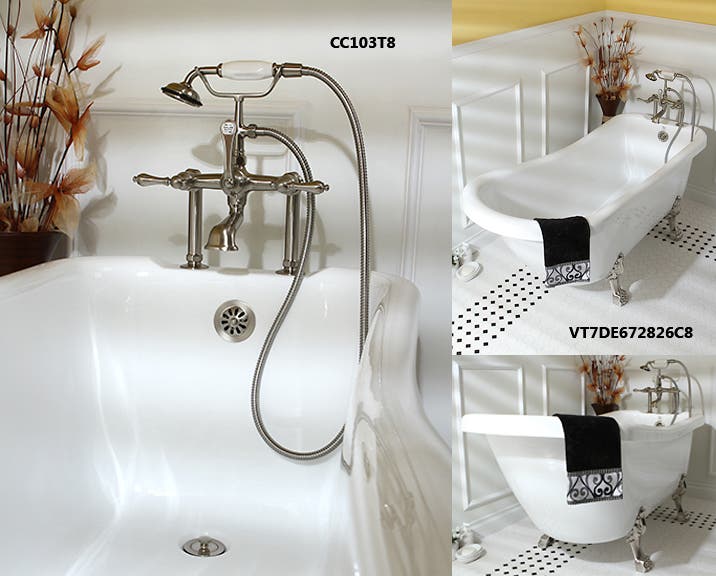Get PRO Pricing
Get [PRO] Pricing

The verdict is in: clawfoot tubs are the preferred choice of many consumers. Contemporary trends are moving toward a vintage aesthetic that elicits a nostalgia of ornamental fixtures and
a focus on sturdy materials.
Before you hop on the bandwagon to vintage interior design, read up on the anatomy of the various styles of clawfoot tubs.
What separates clawfoot tubs from other freestanding units?
These tubs are different from their counterparts because of their iconic raised feet and roll top.
Roll top
This phrase describes the iconic rolled rim. It offers a smooth edge for the user and increases the ornamental value. Also, it can help homeowners climb in and out with ease. Since these
baths are often made out of durable yet heavy cast iron, these edges can be vital in the installation process. They offer contractors a place to secure their grip while sliding the unit into
place.
Claw feet
Brass feet are the optimal choice for their strength and durability. Brass can be plated in a number of hues and take on a variety of shapes. Here are a few choices:
Oil-rubbed bronze
Polished brass
Chrome
Additionally, the style of the feet can range to suit a variety of preferences. Some are modeled after hind legs while others simply have ornate lines and a rounded bottom.
Foundation
Whether you ultimately choose acrylic or cast iron, you’ll be happy with your selection because they are both quality materials. However, the latter is more historically appropriate. It’s also a
favorite for its heat-retention properties. In contrast, lightweight acrylic is easier to install. Additionally, its manufacturers can duplicate the high-gloss coating often found in cast-iron
units.
Mounting
Choosing where you mount your faucet is based on your bathroom layout and then, ultimately, your preference.
Deck – This refers to antique bath fixtures installed to the rim of the tub.
Freestanding – In this case, the plumbing and faucets sit on their own stand and hang over the tub to fill with water. This style is perfect for those that wish to display the workmanship of the
brass hardware.
Wall – This option is suitable for those who have space limitations. If you place your clawfoot tub against a wall, you could install your faucets directly into the tile or drywall like with other standard units.
Shape
While each of these vintage tubs look elegant once sitting in your bathroom, they offer different designs to fit a variety of preferences.
Capacity – Since these bathtubs are available in numerous sizes, measure your space to see what is right for you. For soaking purposes, consider a 52-gallon tub.
Symmetrical – The unit has a the traditional circular-shaped rim and is great for lounging.
Slipper – Slipper tubs have one raised backrest, similar to chaise lounges, to provide extra comfort during long soaking periods.
Double slipper – This last coveted style is another great option and these bathtubs have two raised sides.
For more questions regarding the anatomy of our Kingston Brass bathtubs, contact us at mkt@kingstonbrass.com.
